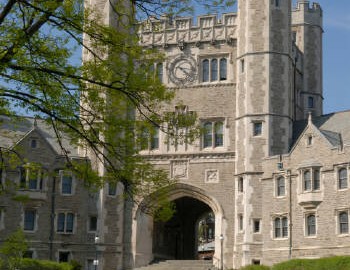Elite College Acceptance Rates for 2016
New York Times columnist Frank Bruni’s satirical piece on March 30th announced that the percentage of applicants admitted to Stanford in 2016 had dropped to its inevitable rate of 0%. He says, “With no one admitted to the class of 2020, Stanford is assured that no other school can match its desirability in the near future.”
Mr. Bruni occasionally whiffs when swinging at college admissions practices, but not this time. His comic overstatement reflects a real trend in the world of college admissions. Elite institutions are becoming increasingly exclusive. Successful applicants need more than an impeccable academic record. They need guidance and perseverance to understand and satisfy the esoterica of the admissions process at each of the top-tier colleges that they aspire to attend.
Stanford’s actual admissions rate for the Class of 2020 was 4.7%, an all-time low that is not really that far above 0%. Other elite institutions have announced 2016 results that also set new records for low admission rates.
This week on the blog, we’ll compare acceptance rates for the Ivy League and three similarly elite universities that have released 2016 admissions information; MIT, Stanford, and Northwestern. Next week, we’ll extend this review to other top-tier institutions, including the most elite of the small liberal arts colleges.
The table below compares admissions data from last year to this year:
| Institution | Applicants
In 2016 |
Admitted in 2016 | 2016 %
Admitted |
Applicants
In 2015 |
Admitted in 2015 | 2015 %
Admitted |
| Brown | 32,930 | 2,919 | 9.0 | 30,397 | 2,580 | 8.5 |
| Columbia | 36,292 | 2,193 | 6.0 | 36,250 | 2,228 | 6.1 |
| Cornell | 44,966 | 6,277 | 14.0 | 41,907 | 6,234 | 14.9 |
| Dartmouth | 20,675 | 2,176 | 10.5 | 20,504 | 2,120 | 10.3 |
| Harvard | 39,041 | 2,037 | 5.2 | 37,307 | 1,990 | 5.3 |
| MIT | 19,020 | 1,485 | 7.8 | 18,306 | 1,467 | 8.0 |
| Northwestern | 35,099 | 3,751 | 10.7 | 32,124 | 4,187 | 13.0 |
| Penn | 38,918 | 3,661 | 9.4 | 37,627 | 3,697 | 9.9 |
| Princeton | 29,303 | 1,894 | 6.5 | 27,290 | 1,908 | 7.0 |
| Stanford | 43,997 | 1,313 | 4.7 | 42,487 | 2,144 | 5.1 |
| Yale | 31,455 | 1,972 | 6.3 | 30,237 | 1,963 | 6.5 |
Information about each school’s Early Action (EA) and Early Decision (ED) programs is provided below.
- Brown: Brown accepted 669 of the 3,030 EA applications received for the Class of 2020. These EA applications represent a slight increase over last year’s 3,016 applications.
- Columbia: Columbia’s incoming freshman class can be comforted by the school’s freshman retention rate of 99%, which, along with those of Yale and Chicago, is the highest in the U.S. Columbia received 3,520 ED applications for the Class of 2020. The school has not yet announced the results from this pool of applicants, but last year 20% were accepted.
- Dartmouth: The admissions office reported that it had received 1,927 ED applications for the Class of 2020. These applicants represent a 3.6% increase over last year’s ED pool. Dartmouth accepted 494 of the ED applicants, 11 more than last year’s 483 students. These 494 students accepted this year will comprise 23% of the incoming freshman class.
- Harvard: Harvard’s 39,041 total applications for the Class of 2020 represents a 4.6% increase over last year and sets a record for the University. The school accepted 918, or 14.8%, of the 6,173 EA applicants to the Class of 2020. The size of the EA pool increased by 4.3% and the acceptance rate fell 1.7%. Of all EA applicants not admitted to the class, 4,673 were deferred to the regular cycle, 464 were denied admission, 12 withdrew, and 106 submitted incomplete applications. Last year, the EA program admitted 977 students, or 16.5% of the 5,919 EA applicants.
- MIT: MIT received 7,767 EA applications, up from 6,519 for the Class of 2019. The school accepted 656 of these EA applicants for a rate of 8.45%
- Northwestern: The admissions rate hit a record low at 13% of applicants accepted. It has dropped for the last six consecutive years. Ten years ago, 31% applicants were admitted. In December, the university accepted 1,012 students through its ED program, comprising 49% of the incoming freshman class, also a record.
- Penn: Penn received 5,762 ED applications for the Class of 2020, an increase from last year’s 5,489 ED applications. Penn admitted 1,335 of these applicants this year for a 23.2% rate.
- Princeton: The admissions office reported a record number of total applicants for the 2015-16 admissions cycle, receiving 29,303, a 7.4% increase over last year.Princeton admitted 785 students from a pool of 4,229 candidates who applied through EA for the Class of 2020, a rate of 18.5%. The pool was the largest in the last five years, representing a 9.8% increase over last year’s EA applicants.
- Stanford: A record-breaking 43,997 applications were submitted despite the fact that Stanford has the highest application fee in the country at $90. Stanford accepted 745 applicants who sought admission to the Class of 2020 under the University’s EA program, or 9.5%. The successful applicants were selected from 7,822 EA candidates, the largest EA pool in Stanford’s history.
- Yale: The school offered admission to 795 out of 4,662 EA applicants, which is 17.1%, for the Class of 2020. Of these, 53% were deferred for reconsideration in the spring and 29% were denied admission. This is an increase from the 753 EA applicants last year.
Admissions rates are important to colleges because they are used by organizations such as US News as the principal criterion by which colleges are ranked. However, admissions rates shouldn’t be considered by parents and students to be the only or even the most important characteristic of a college. The rate doesn’t describe the quality of education at the school. Moreover, it provides no clue to the degree to which the school may fit your unique set of needs and goals.
The admissions rate is a factor of the prestige of an institution. That a school attracts thousands of applicants who know that only a very small percentage of them will be accepted reflects of the power of the college’s brand. However well earned a school’s reputation may be, their admissions rate is still subject to manipulation.
In other words, don’t let the relative prestige of schools be your only criterion in targeting colleges. An IvySelect college admissions expert can assist you in identifying those schools that best fit your needs, goals, preferences, and talents.





